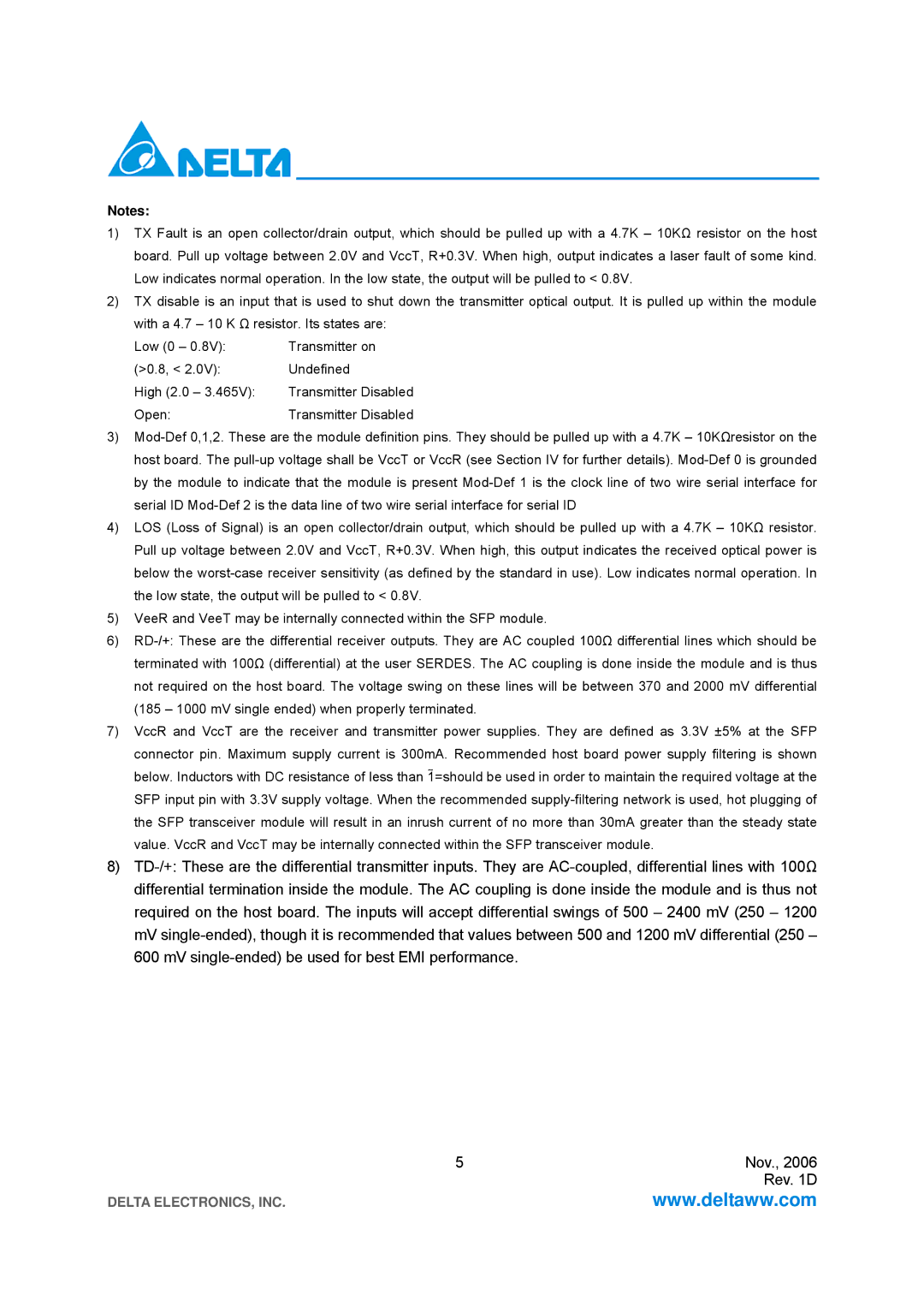LCP-2125 specifications
Delta Electronics is a global leader in power and thermal management solutions, and one of their renowned products is the LCP-2125, a cutting-edge liquid cooling pump designed for enhancing thermal management in various applications. The LCP-2125 is specifically engineered to cater to the demands of high-performance computing environments, data centers, and industrial processes that require efficient cooling solutions.One of the standout features of the LCP-2125 is its high efficiency. Designed to minimize energy consumption while maximizing cooling performance, this pump employs advanced motor technology, reducing operational costs significantly. This is particularly beneficial in data centers, where cooling can account for a substantial portion of energy expenditure.
The LCP-2125 operates with a variable speed control mechanism, allowing for precise management of cooling power based on the specific temperature requirements of the system. This adaptability not only enhances energy efficiency but also prolongs the lifespan of equipment by ensuring they operate within optimal thermal conditions.
Another key characteristic of the LCP-2125 is its robust design, which is built to withstand harsh operational environments. The pump features corrosion-resistant materials and a durable casing that further protects against wear and tear, ensuring reliable performance over extended periods.
Delta Electronics integrates advanced monitoring and control technologies into the LCP-2125 as well. This includes real-time data tracking of flow rate, temperature, and pressure, allowing for proactive maintenance and quick identification of any potential issues. This level of monitoring is crucial in mission-critical settings where unplanned downtime can lead to significant repercussions.
Moreover, the LCP-2125 is designed for easy installation and maintenance, making it a convenient choice for facilities managers. Its compact size facilitates integration into various systems without occupying excessive space, which is an advantage in densely packed environments.
In conclusion, the Delta Electronics LCP-2125 liquid cooling pump stands out as a reliable solution that addresses the thermal management challenges of modern applications. With its energy-efficient design, robust construction, and advanced monitoring capabilities, it provides a perfect balance between performance, durability, and ease of use, making it an invaluable asset for industries reliant on high-performance computing and effective cooling systems.

